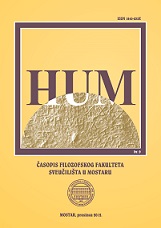JAVNOST I OKOLIŠ – TRI STUPA AARHUŠKE KONVENCIJE
GENERAL PUBLIC AND ENVIRONMENT – THREE PILLARS OF THE AARHUS CONVENTION
Author(s): Nevenko Herceg, Zoran TomićSubject(s): Social Sciences
Published by: Filozofski fakultet Sveučilišta u Mostaru
Keywords: public; environment; sustainable development; participation of the public; access to information; access to jurisdiction; the Aarhus Convention; Law on environment protection
Summary/Abstract: Convention on access to information, public participation in decision making and access to justice in environmental matters – The Aarhus Convention – is an international legal framework in the area of the environment protection. This convention, initiated under the auspices of UN, is the most ambitious venture as far as environment protection is concerned. Its adoption made at the same time a huge step in the international law development. Accepting the principles and formally accessing to the Aarhus Convention, countries from our region (Southeast Europe) show that rights in the environment protection area are not the luxury reserved only for the rich ones. This document defines the rights in the environment area and makes the reliable foundation for involving the general public in the environment policies which confirms our commitment to future generations. That is a proof that sustainable development can be achieved only by involving all participants in the society. The Aarhus Convention is a link between the authorities’ responsibilities and environment protection, because participation of the public increases responsibility and transparency in decision making, as well as consciousness of the public about environmental matters. It also provides support for the made decisions. Efficient participation of the public promotes cooperation principles and consultation between citizens and decision makers, which contributes to general society democratization. That is enabled by the Aarhus Convention implementation which includes: access to information, participation of the public in decision making and access to jurisdiction when speaking of environment. These are at the same time three main Convention pillars. Twelve years ago the UN Secretary General Kofi Annan described the Convention as “the most ambitious venture in environmental democracy undertaken under the auspices of the United Nations”. We can say that the mentioned description is probably correct even today, although there have been many other significant improvements in environmental democracy.
Journal: Hum
- Issue Year: 2012
- Issue No: 9
- Page Range: 361-389
- Page Count: 29
- Language: Croatian

